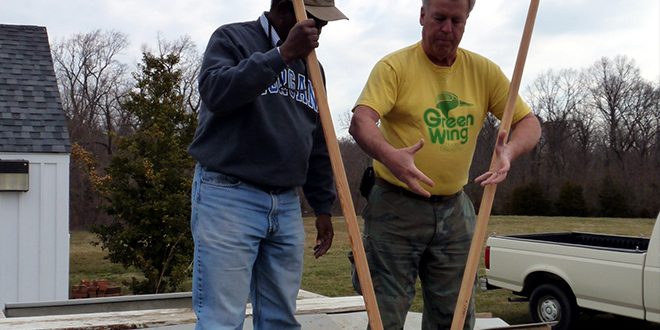– Research Could Help Improve Oyster Populations and Benefit Watermen –
For Immediate Release: APRIL 21, 2015
Contact: Clinton R. Coleman, 443-885-3022
Nancy Jackson, 443-885-3666
Research conducted at Morgan State University’s Patuxent Environmental Aquatic and Research Lab (PEARL) shows that recycled concrete from road projects can be used to create habitat for oysters without harming the ecosystem of the Chesapeake Bay.
The study, completed in February, also examined whether the recycled concrete aggregate (RCA) used to create oyster reefs would be suitable for the commercial harvesting of oysters by watermen.
When highways are resurfaced, the old concrete is crushed and milled into RCA. To restore the oyster population, baby oysters, called spat, are grown in tanks and then placed on oyster shells, which are planted on a hard reef that keeps them from sinking into the Bay’s silt bottom. Traditionally, the reefs themselves were made of oyster shells, but oysters have declined so much that shells are now scarce. The Maryland State Highway Administration commissioned the three-phase study to find out if RCA would be a suitable material to support the oysters. Researchers at PEARL conducted the studies and the National Transportation Center at Morgan State University contributed to the funding of the study.
“These unique studies addressed objectives for more sustainable transportation infrastructure and oyster aquaculture,” said Dr. Andrew Farkas, director of the National Transportation Center at Morgan. “The benefits of both could contribute to enhanced Bay water quality.”
 The first phase of research examined whether the RCA could harm the bay with leaching of chemicals or any unintended consequences. Laboratory experiments determined the type and quantity of leachates and the impacts of RCA on the survival and growth of juvenile oysters. The RCA leachate remained well below regulatory levels and did not raise the pH above the threshold for introduction into Maryland waters.
The first phase of research examined whether the RCA could harm the bay with leaching of chemicals or any unintended consequences. Laboratory experiments determined the type and quantity of leachates and the impacts of RCA on the survival and growth of juvenile oysters. The RCA leachate remained well below regulatory levels and did not raise the pH above the threshold for introduction into Maryland waters.
The second phase examined whether the RCA would somehow affect other marine life populations. It also examined whether RCA would disrupt the use of traditional harvesting gear. Finally, the study explored the lack of regulation regarding the use of such alternative materials.
The second phase took place at two oyster aquaculture sites with different salinities, one in the Patuxent River just north of Broom’s Island and the other in Fishing Bay on the Eastern Shore. To test whether watermen could harvest the oysters, a tank at the PEARL in St. Leonard, Md., was filled with 500 oysters on a “reef” made of RCA and oyster shell. Boards placed on the side of the tank simulated the washboards on a boat, allowing watermen to tong the oysters, and the time it took to fill their tongs was recorded. The watermen also filled out questionnaires.
While the study found that RCA does not attract predators or affect marine life and is suitable for use in creating oyster habitat, it revealed that because RCA weighs more than oyster shells, it was more difficult to tong. The watermen suggested it could be used with either a veneer of oyster shells placed on top or used in areas that are not going to be tonged.
Morgan State University, founded in 1867, is a Carnegie classified doctoral research institution offering more than 60 academic programs leading to bachelor’s degrees as well as programs at the master’s and doctoral levels. As Maryland’s public urban university, Morgan serves a multi-ethnic and multi-racial student body and seeks to ensure that the doors of higher education are opened as wide as possible to as many as possible. For more information on Morgan State University, visit www.morgan.edu.
To read a summary of the study, visit: http://www.roads.maryland.gov/OPR_Research/MD-15-SHA-MSU-3-12_Waste-Concrete-for-Oyster-Aquaculture-Phase-II_Summary.pdf.
To read the full research reports for Phase I and II, visit the National Transportation Center’s website at www.morgan.edu/soe/ntc.
# # #
 Morgan State University Newsroom Morgan State University
Morgan State University Newsroom Morgan State University





